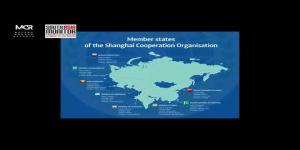Across South Asia Slum Dwellers Are Deprived Of Their Human Rights
Eviction of slum dwellers in South Asian nations cannot merely be dismissed as collateral damage of urban development and anti-encroachment drives. They reflect a larger, alarming trend of displacement of the urban poor and gross violations of their dignity and human rights.

The expansion of slums has occurred in parallel with global urbanization. Sometimes, scholars have been dissuaded from using the term ‘slum’ for its negative associations to being labeled “beggarly”, “useless” and sometimes that of squalor. Such perspectives have regarded ‘informal settlement’ to be a better alternative, though the word does not fully capture the nuances of being a slum-dweller and the historical marginalization, routine evictions and denial of life-enhancing opportunities they face.
South Asia has one of the highest rates (30%) of slum population in the world (World Bank, 2014). Most of this population happens to be in and around major Indian cities. More than 55% of Dhaka's and Colombo’s population lives in slums. In Pakistan, the Katchi Abadis houses more than half of the country’s urban citizens. Research around slum dwellers in South Asia from a rights-based approach is scanty, which however does not diminish the urgency of the crisis.
Live under chronic insecurity
The people living in the slums are an inseparable part of the urban economy. They comprise construction workers, migrant labourers, domestic helps, factory workers and their families. Most of these people do not have titles to their lands and living spaces. Their exclusion from access to clean water, sanitation and education perpetuates the cycle of marginalization.
They are not adequately protected from impacts of climate change. Sudden evictions and fires that break out mysteriously put the lives and livelihoods of the urban poor on the line. Civic authorities conduct these evictions with impunity in the name of ‘development’ and illegality of the squatters.
The historical and systematic inequalities that have entrenched the lived experiences of the urban slum dweller cannot be sidelined. The British colonial policy of city planning in former colonies that called for demolishing slums for the sake of development without rehabilitation had reinforced the conditions of the poor they had set into motion. This colonial remnant of segregation, a residential divide between the low-income households and the higher classes, is still reflected in the urban architecture of South Asia. While some countries have replaced the colonial-era laws with legislation prioritizing compensation and rehabilitation for displaced populations, there are others which continue to take advantage of legal loopholes to victimise the slum dwellers.
Shifting legal stances
The Supreme Court of India has shifted between imparting legitimacy to evictions and recognizing their human rights to adequate shelter. In the case of Olga Tellis vs. Bombay Municipal Corporation, the apex court tackled the question of evicting slum and pavement dwellers, granting them constitutional protection as a right to life. On a contrary note, in August, 2020 the Supreme Court passed an order for removal of more than 40, 000 jhuggis (hutments) to reclaim railway properties, without bestowing any alternatives. June 2025 saw the razing of slums in Gokalpuri and other areas in Delhi with minimal prior notices. Delhi’s rehabilitation policy requires the slum dwellers to pay maintenance and construction charges.
Policymaking in India needs to be guided by considerations of caste, class and equitable access when it comes to rights of slum dwellers. The Pradhan Mantri Awas Yojana–Urban (PMAY-U) scheme and the The Right to Fair Compensation and Transparency in Land Acquisition, Rehabilitation and Resettlement Act of 2013 by India are steps in the right direction that put displaced communities at the heart of land acquisition and rehabilitation laws.
Weak policymaking
The Katchi Abadis of Pakistan are regulated by the National Housing Policy of 2001. In a case involving the I-11 Katchi Abadi, the Islamabad High Court directed the removal of the inhabitants for allotting land to the Capital Development Authority. This rendered thousands homeless and several being arrested under the Anti-Terrorist Act. In the absence of alternatives, these people still await restoration of their living conditions.
Pakistan’s policy making does not have an approach towards empowerment which only multiplies the growth of slums and their appalling living conditions. Developmental projects are designed in ways that uproot the people of the land. An example of the same is the RUDA project aiming to develop the Ravi river into a perennial water body alongside improved urbanization, which is estimated to displace many farmers and slum dwellers.
Victims of crime syndicates
The Constitution of Bangladesh sees housing as a symbolic basic necessity that is not justiciable. The National Housing Policy of Bangladesh does not impose punitive measures on the executive against evictions. Numerous human rights organizations and non-governmental bodies regularly file PIL to address these concerns, but the Supreme Court has struggled with structural injunctions due to institutional capacity.
Due to inaccessibility, slums in Bangladesh often operate in illegal ways. In slums like Mandarpara, the ‘mastaans’ (local political henchmen or power brokers) ensure availability of water and other necessities at prices higher than the market rate. This has caused the growth of many criminal syndicates and proliferation of crime in the slum areas.
In Sri Lanka, developmental programmes for urban rejuvenation have caused evictions and a subsequent class division on the basis of housing. To roll out the red carpet for the 1976 summit of the Non-Aligned Movement, the government of Sri Lanka relocated thousands of families in the Summitpura slum in Mattakkuliya. The Mattakkuliya development project in Colombo is expected to have far-reaching effects on the lives of slum residents.
Weak application of global frameworks
These countries are signatory to international frameworks like the International Covenant on Economic, Social and Cultural Rights (ICESCR) and Istanbul Declaration on Human Settlements (1996). The Global Strategy for Shelter to the Year 2000 endorsed broadly across South Asia in 1988 is a distant reality. Most of these global agreements being soft laws do not carry any provision for determining accountability. Optional Protocol (2008) to the ICESCR has a mechanism for redress but countries like India and Pakistan are not signatories to the same.
Eviction of slum dwellers in South Asian nations cannot just be dismissed as collateral damage of urban development and anti-encroachment drives. They reflect a larger, alarming trend of displacement of the urban poor and gross violation of their dignity and human rights.
(The author is a writer and a third-year student of B.A. LLB at the West Bengal National University of Juridical Sciences. She specialises in the intersection of power structures in society and human rights. Views expressed are personal. She can be reached at basutaniyya@gmail.com.)









Post a Comment